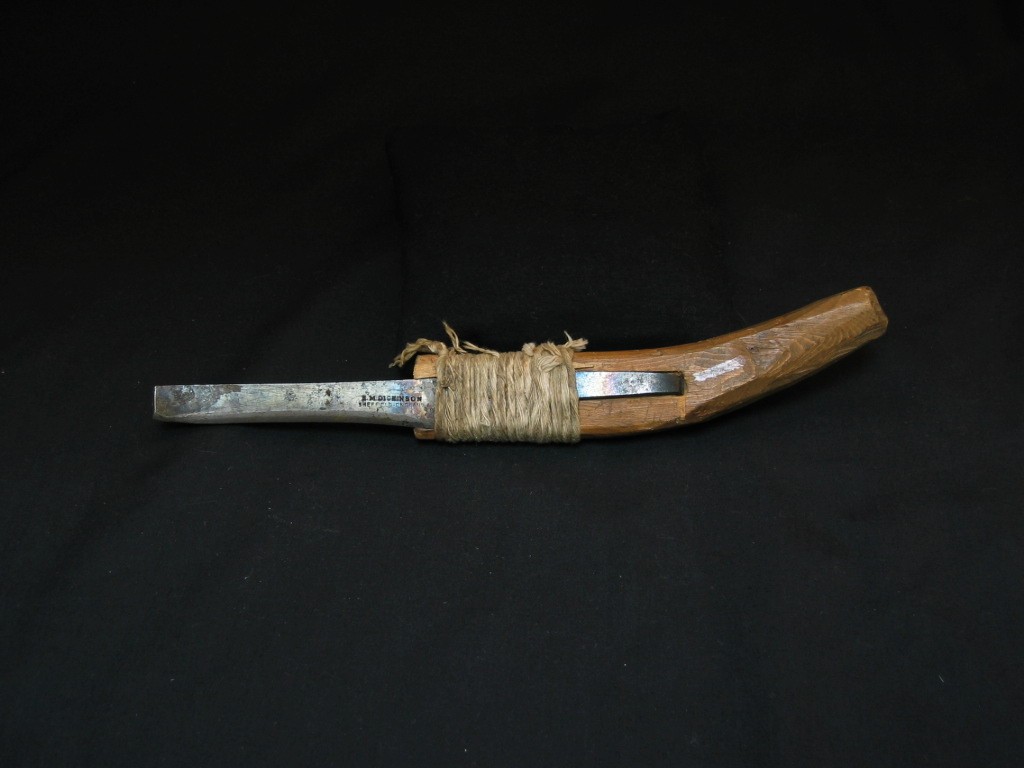This crooked knife was purchased in Moose Factory, Ontario, presumably by Sam Waller when he was teaching there. The wood handle is slightly curved and goes narrower at the butt. A long rectangular deep notch, roughly half the size of the hilt, has been carved into the wood. The handle of the blade sits in this notch. The blade is thin and rectangular and its tip is slightly curved. “E.M. Dickinson Sheffield, England”, the manufacturer of the blade, is engraved on the blade near where it sits in the handle. The blade is secured to the hilt with string. Phil Reader, a longtime resident of Northern Manitoba, described crooked knives to Sam Waller like this: “The crooked knife was…a standard implement of Northern native life. In actual use it is handled as a draw knife and the [user] can make almost anything he needs with it. The knife seems to have been evolved by the [First Nations] themselves without using any European equipment as a pattern. The [Inuit or Ininiwuk] trade for files of various sizes at the Hudson Bay posts. The temper is drawn from the file and the length is shortened to between 4 and 6 inches. One edge of the file is ground to a knife edge and the point is bent around to form a curved face. After re-tempering the blade, a handle is fitted over the tang of the file. A binding of wet rawhide tightens the whole together and it is ready for use. With this tool and an axe, the [Inuit or Ininiwuk] is ready for any job. Canoes, paddles, drinking cups, axe handles, etc. are fashioned with a skill that would amaze a white craftsman with every modern tool available.”
Museum Hours: 1pm to 5pm daily! more...
Gallery
- Sam Waller Museum > Our Collections > Crooked Knife


